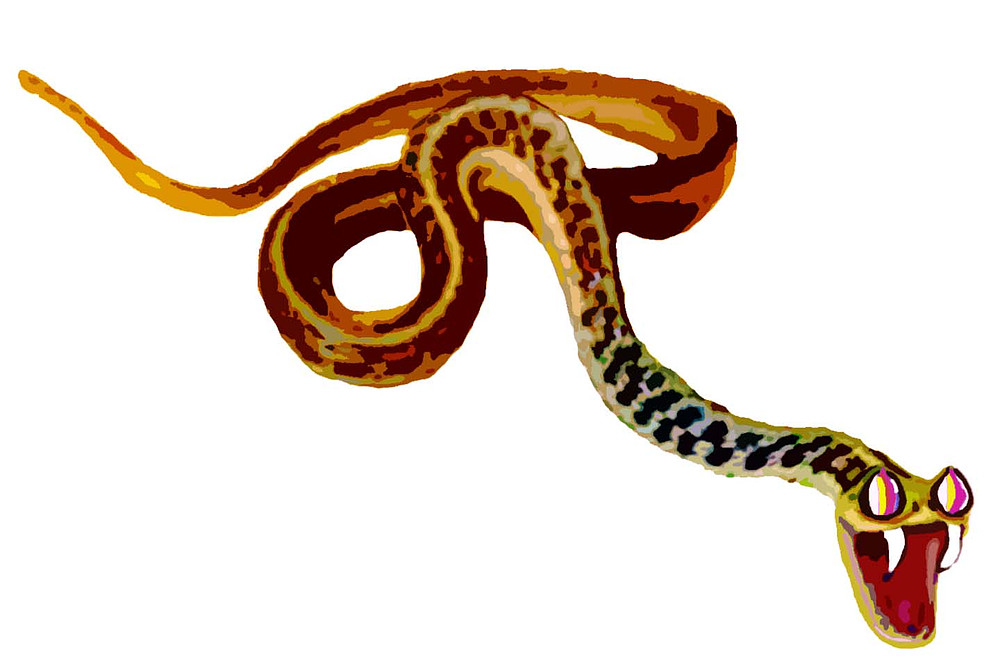
The Dipsas are small but deadly asps said to have infested the deserts of Libya. Its name is derived from the gruesome effects of its venom, which were experienced first hand by Roman soldiers and later describe by the poet Lucan.
The Pharsalia (also known as De Bello Civili meaning On the Civil War), is a Roman epic poem written by Lucan (39 AD – 65 AD) that tells of the civil war between Julius Caesar and the forces of the Roman Senate. Book IX of this poem describes how, Cato, a politician and leader of the republics army, leads the Senate soldiers across Africa. As the army marches, Lucan references the myth of Perseus and Medusa and describes the various serpents that rose from the blood that dripped from Medusa’s severed head onto the desert sand, which included the Cenchris, the Scytale, and the Dipsa.
Lucan was particularly attracted by the dipsas, not for their appearance, which he never described, but for the effects of their venom, which dried and desiccated the body. Lucan also mentions that the dreaded Amphisbaena could be related to the Dipsas, as they both kill their victims with extreme speed.
Later in the poem, Lucan describes more grotesque symptoms as the unfortunate Nasidius, one of the soldiers under Lucan's command, upon suffering a dipsa's bite, feels the flames of the venom coursing through his veins. Soon, his entire body starts to swell, inflating and bloating and cutting through the armor and engulfing his limbs. The tumorous swelling ends only once Nasidius is a formless, headless heap, that then dries up to a fragile shell; his remains so disgusting, even desert scavengers shun them.
However, older accounts to those of Lucan, described the dipsas as being so small they can’t be seen, only felt once a person steps upon one. This accounts also mentioned that the dipsas are so fragile, the mere act of stepping on one completely destroys it but not before the serpent delivers its fatal bite. A notion that may explain Lucan's lack of descriptions on the actual appearance of these serpents.
A key difference separates these accounts from Lucan's: according with local stories the venom of the Dipsa acts so fast the person would die before even feeling the pain of the bite or the effects of the venom, making the recount of Nasidius an impossible one.
References
-Batinski, E. (1992) Cato and the Battle with the Serpents. Syllecta Classica, Vol. 3, pp. 71-80.
-Flaubert, G. (1885) La Tentation de Saint Antoine. Quantin, Paris.
-Lucan, trans. Rowe, N. (1720) Pharsalia. T. Johnson, London.